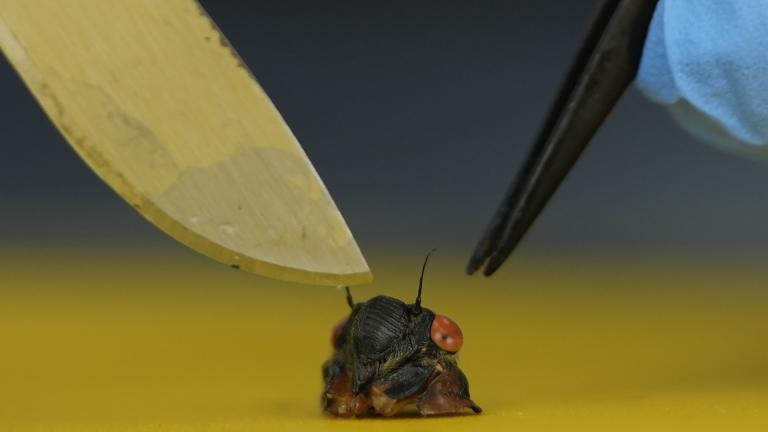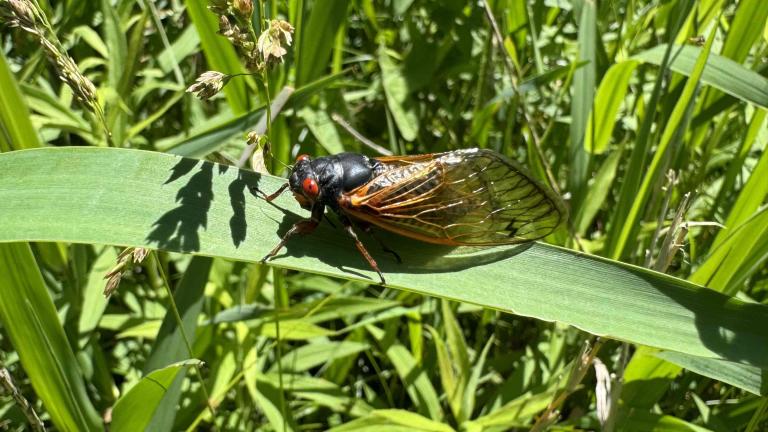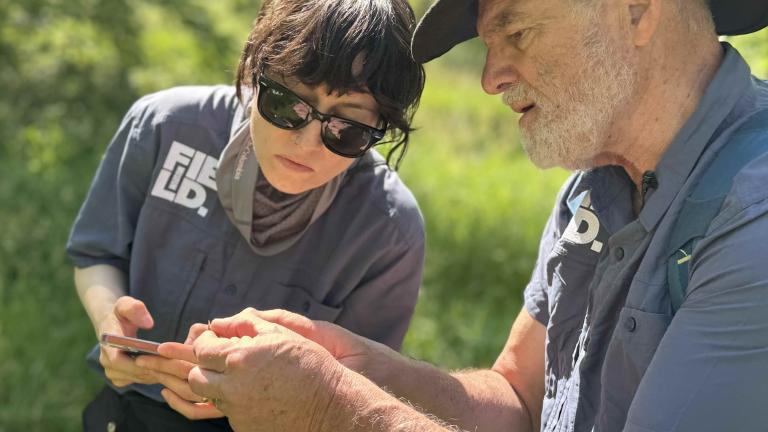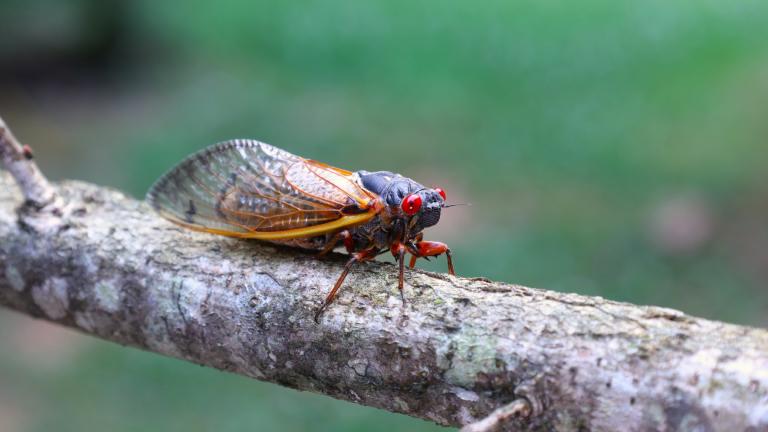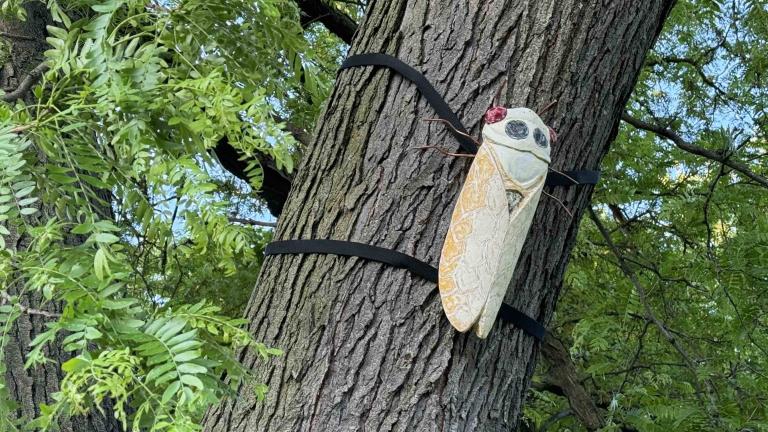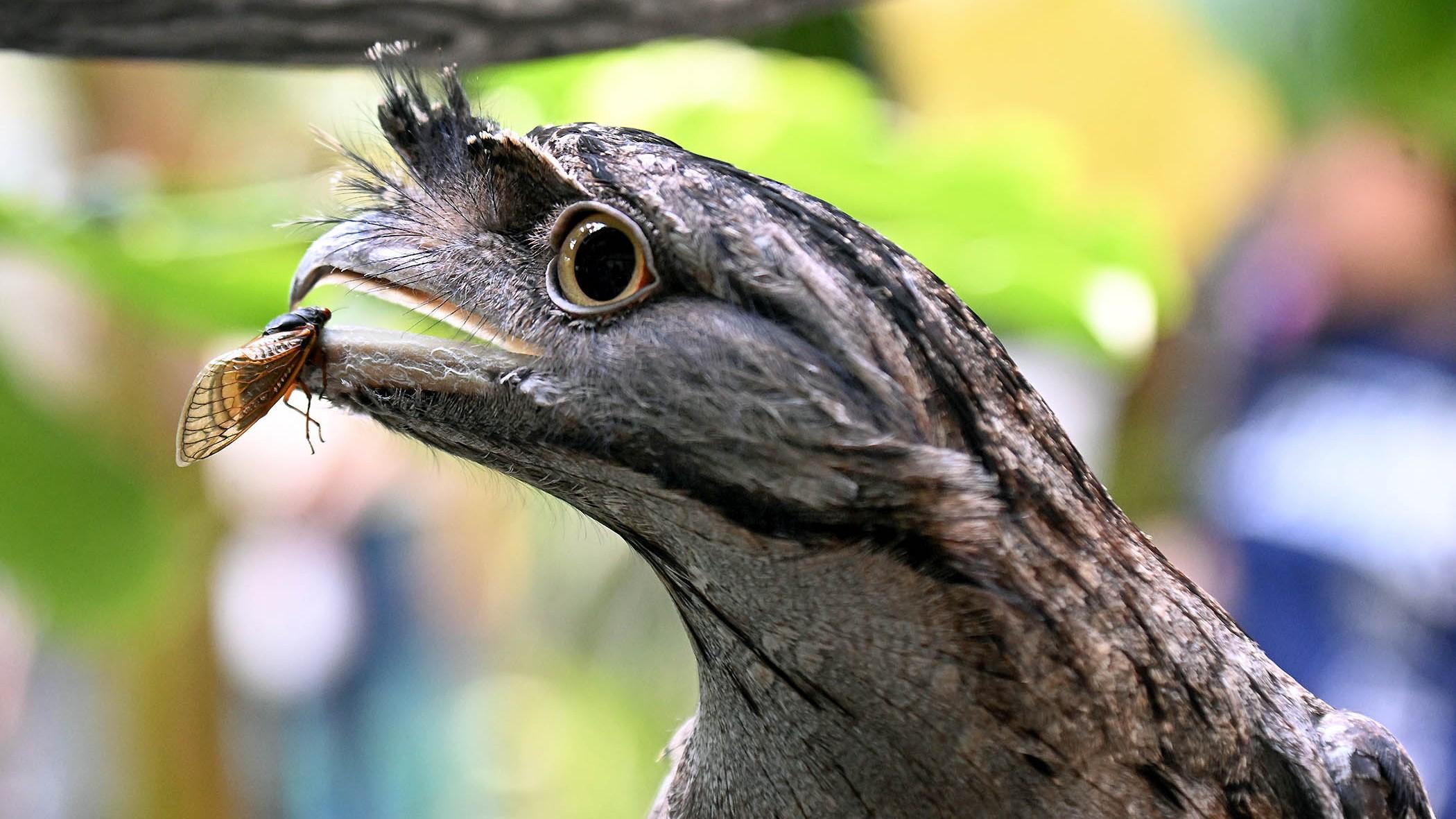 A tawny frogmouth at Brookfield Zoo made the wise choice to play with but not eat a periodical cicada. The insects have been linked to disease in some birds. (Jim Schulz / Brookfield Zoo Chicago)
A tawny frogmouth at Brookfield Zoo made the wise choice to play with but not eat a periodical cicada. The insects have been linked to disease in some birds. (Jim Schulz / Brookfield Zoo Chicago)
In late May, Willowbrook Wildlife Center in Glen Ellyn began experiencing an uptick in birds admitted with eye issues — swollen eyelids, crusted eyes and damaged corneas.
If those symptoms ring a bell, it’s because they’re the same signs seen in songbirds back in 2021 when a “mystery disease” struck populations across parts of the eastern U.S.
The suspected link between the two outbreaks?
Cicadas.
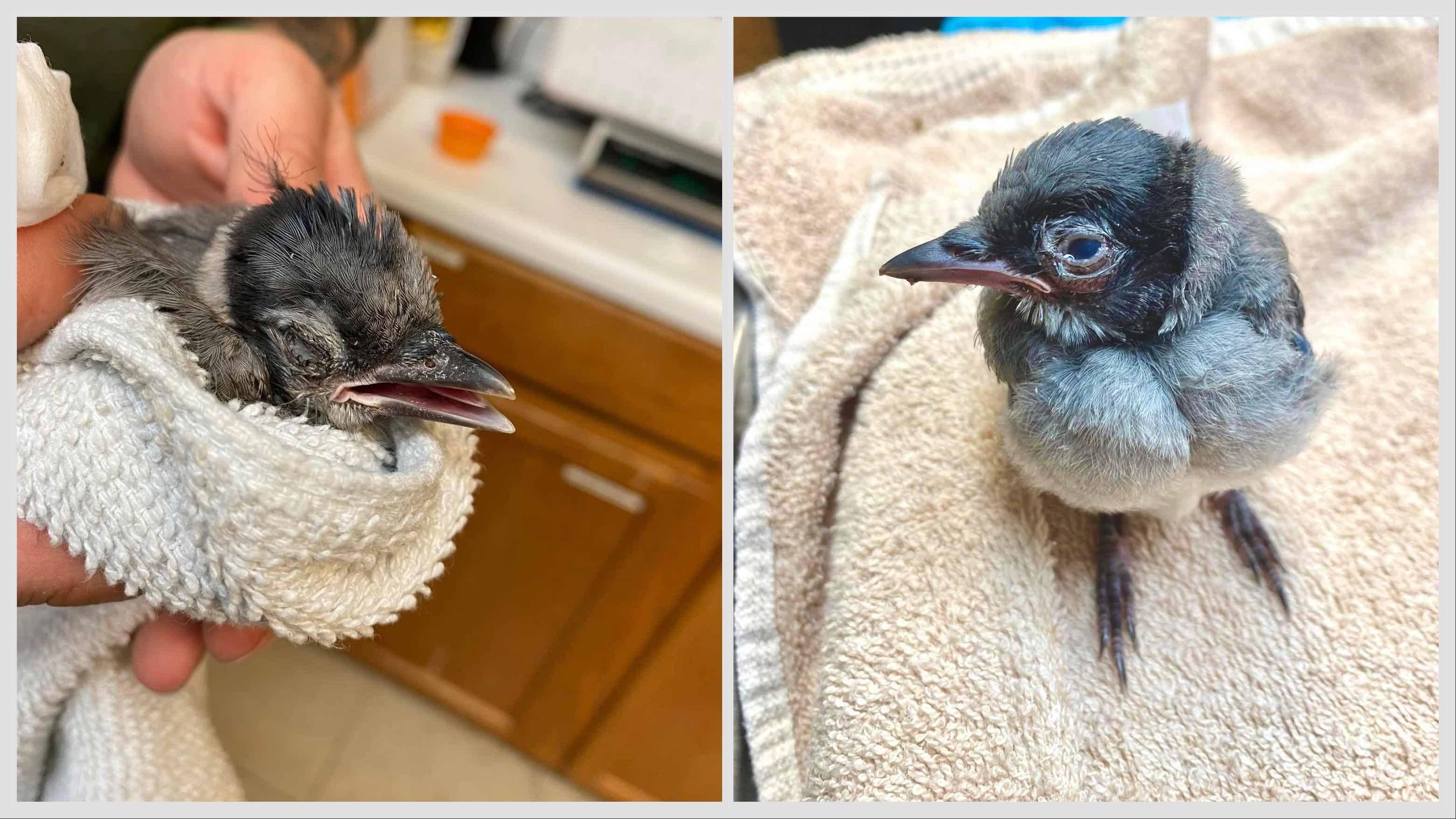 Birds admitted to Willowbrook Wildlife Center, showing signs of suspected vitamin A deficiency caused by eating too many cicadas. (Courtesy of Willowbrook Wildlife Center)
Birds admitted to Willowbrook Wildlife Center, showing signs of suspected vitamin A deficiency caused by eating too many cicadas. (Courtesy of Willowbrook Wildlife Center)
The National Wildlife Health Center conducted tests on hundreds of diseased birds in 2021, particularly out of concern the U.S. could be witnessing the emergence of a new infectious disease. (At the time, people were advised to take down bird feeders as a precaution.)
“They ruled out everything they could think of: common toxins, common or not-so-common infectious diseases,” said Sarah Reich, head veterinarian at Willowbrook. “(The birds) were negative for influenza, they were just negative for everything.”
Necropsies did provide a clue for investigators. The sick birds, the vast majority of which were fledglings, showed classic signs of vitamin A deficiency.
Acting on that bit of evidence, researchers at the center began putting the puzzle pieces together. To wit:
— In 2021, Brood X 17-year periodical cicadas emerged in an area extending from Indiana to New Jersey.
— All sorts of wildlife, including birds, gorged on the cicada buffet.
— The locations of sick birds coincided with Brood X’s range.
Examining cicadas, scientists found the insects’ bodies are almost entirely devoid of vitamin A, except in their eyes.
“When you look at what animals are eating, they’re not eating the (cicada’s) eyes or the head, they’re eating the innards of the bug,” Reich said. “They (researchers) made the connection this was all a vitamin deficiency.”
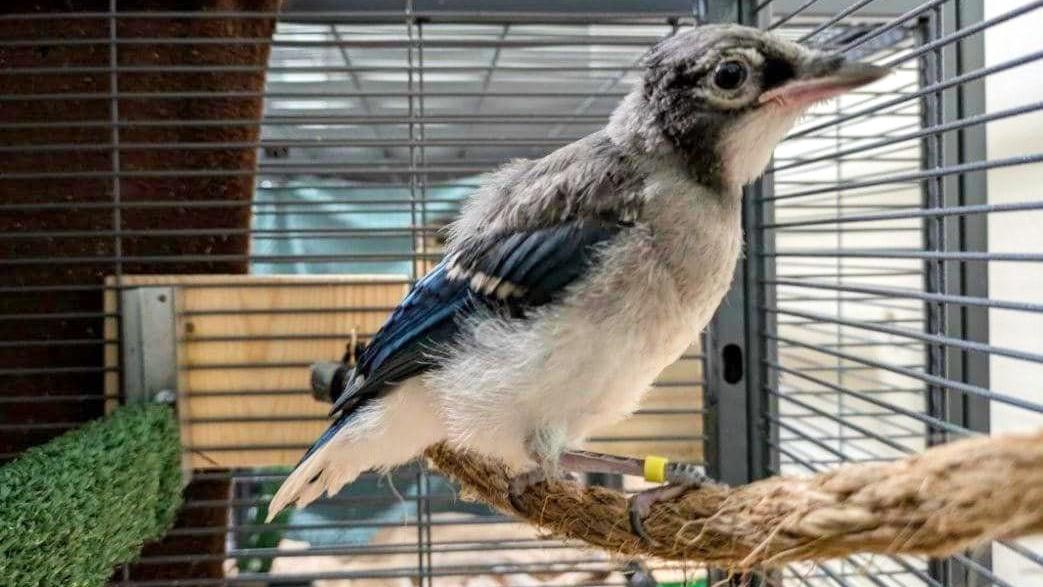 The field of wildlife rehab has grown leaps and bounds in the last five to 10 years, said Sarah Reich, head veterinarian at Willowbrook Wildlife Center. Birds can be treated for diseases, like suspected vitamin deficiencies, that may have gone unnoticed or undiagnosed in the past. (Courtesy of Willowbrook Wildlife Center)
The field of wildlife rehab has grown leaps and bounds in the last five to 10 years, said Sarah Reich, head veterinarian at Willowbrook Wildlife Center. Birds can be treated for diseases, like suspected vitamin deficiencies, that may have gone unnoticed or undiagnosed in the past. (Courtesy of Willowbrook Wildlife Center)
Willowbrook received an email alert from the National Wildlife Health Center at the same time the first “mystery disease” birds began showing up at the rehab center.
The message was a heads up of sorts, stating that while nothing infectious or toxin-related was discovered in 2021, the diseased birds were all in an emergence zone, and Willowbrook was now in the path of Illinois’ Brood XIII 17-year cicada emergence.
“Honestly, we didn’t know of the connection with the cicadas at that point,” said Reich. “Once we got that email and we started very aggressively looking at these cases coming in, we’re like, ‘Oh wow, this is exactly what they said the signs would be, these are the exact ages, the exact species.’”
The current theory is that baby birds are harder hit by the lack of vitamin A because they have a higher need for it and lower body storage than adults. But there’s no rhyme or reason regarding why the affected species are almost exclusively blue jays, grackles, starlings, cowbirds and sparrows, Reich said.
The good news is that with the threat of infectious disease off the table, the sick birds can be treated rather than euthanized. A number of birds have turned around after being given vitamin A and eye medications, Reich said. So far, more than 50 birds have been brought to the center with telltale symptoms.
Necropsy results have already returned on some of Willowbrook’s birds that didn’t make it, Reich added, and the vitamin deficiency is evident.
“It makes sense that we’re seeing the same disease process that they saw in 202, and it does makes sense that it may be related to overindulgence, if you will, of our cicadas,” Reich said. “And it will make even more sense, as the cicadas die down, if we stop seeing a lot of these cases.”
Turns out a balanced diet is a great prescription for wildlife as much as humans.
Contact Patty Wetli: @pattywetli | (773) 509-5623 | [email protected]

